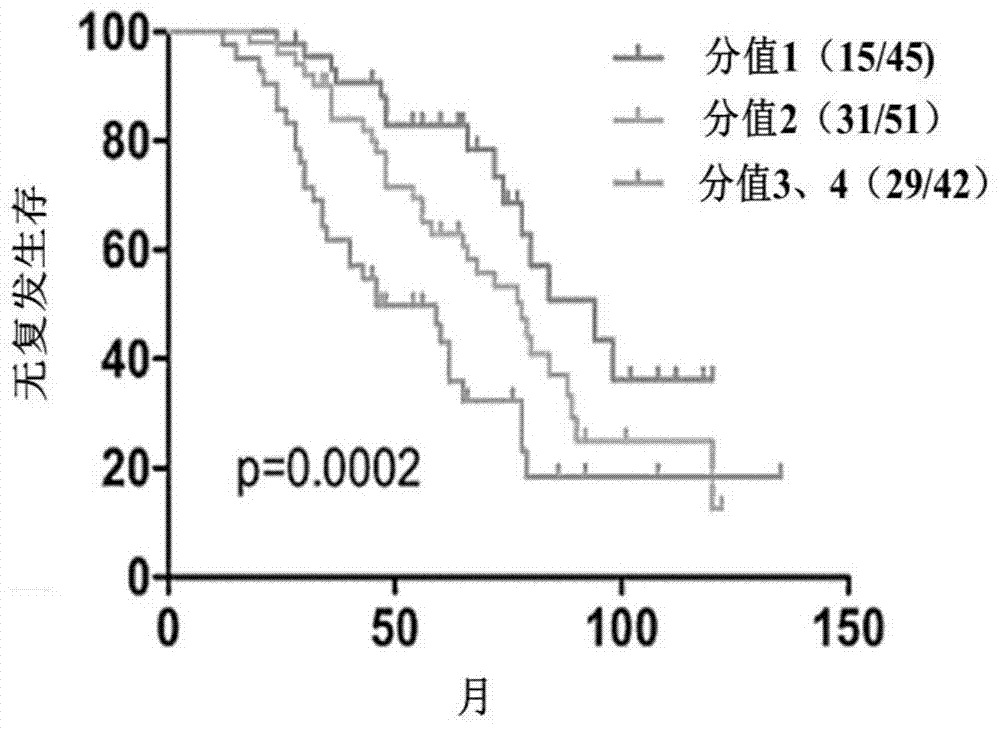Application of neurotensin in diagnosis on castration resistant prostate cancer neuroendocrine subtype and prognosis judgment
An endocrine subtype, neurotensin technology, applied in the field of biomedicine, can solve the problems of prostate cancer patients losing treatment opportunities, disease progression, and insensitivity to endocrine therapy in prostate cancer patients
- Summary
- Abstract
- Description
- Claims
- Application Information
AI Technical Summary
Problems solved by technology
Method used
Image
Examples
Embodiment 1
[0047] Example 1 Correlation between neurotensin and castration-resistant prostate cancer neuroendocrine
[0048] In this embodiment, the level of neurotensin in serum is the fasting level of neurotensin. The fasting level means that no food was ingested 12 hours before the blood sample was taken.
[0049] 1. All the research objects were selected from 64 cases of prostate cancer patients who had undergone anti-androgenic therapy for different periods of time confirmed by pathology in Tianjin Institute of Urology, and these subjects underwent PSA monitoring and examination in Tianjin Institute of Urology during 2014.04-2014.06. No biochemical recurrence was seen in 18 cases, and androgen resistance had occurred in the remaining 46 cases (trend resistant prostate cancer, according to EAU Guideline).
[0050] 2. Research methods
[0051] 2.1 Serum concentration detection of neurotensin
[0052] 2.1.1 Steps: collect serum samples from prostate cancer patients, use the Neuroten...
Embodiment 2
[0067] Example 2 Detection of Interference Efficiency of siRNA against Neurotensin Receptor
[0068] 1. Synthetic siRNA
[0069] Find the gene sequence of neurotensin receptor 1 (Gene ID: 4923), the gene sequence of neurotensin receptor 2 (Gene ID: 23620), the gene sequence of neurotensin receptor 3 (Gene ID: 6272). Designed and chemically synthesized by Shanghai Jikai Genetics Co., Ltd., 2.0OD (5nmol)*2, as follows:
[0070] The siRNA (siRNA) sequence information for neurotensin receptor 1 is as follows:
[0071] Forward sequence: 5'-ACACUAAUGAGAAACAUGGGU-3',
[0072] Reverse sequence: 5'-CCAUGUUUCUCAUUAGUGUCU-3';
[0073] The sequence information of siRNA (siRNA2) targeting neurotensin receptor 2 is as follows:
[0074] Forward sequence: 5'-UCAUUCUUGCAUUACAUUCAG-3',
[0075] Reverse sequence: 5'-GAAUGUAAUGCAAGAAUGAAC-3';
[0076] The sequence information of siRNA (siRNA3) targeting neurotensin receptor 3 is as follows:
[0077] Forward sequence: 5'-UCAUUCUUGCAUUACAUU...
Embodiment 3
[0092] Example 3 Effect of siRNA on Prostate Cell Neuroendocrine
[0093] 1. The procedure for establishing the neuroendocrine cell model of prostate cells is the same as in Example 2.
[0094] 2. Cell transfection: the steps are the same as in Example 2.
[0095] 3. Observation of cell morphology
[0096] The cell morphology was observed under a light microscope, and the results were as follows: Figure 6 As shown, after siRNA interferes with the expression of neurotensin receptor 1 or siRNA3 interferes with the expression of neurotensin receptor 3, or interferes with the expression of neurotensin receptor 1 and neurotensin receptor 3 at the same time, with Compared with the negative control group (siNT), the prostate cancer cells lost their pyramidal shape and dendrites and restored their original morphology.
PUM
 Login to View More
Login to View More Abstract
Description
Claims
Application Information
 Login to View More
Login to View More - R&D
- Intellectual Property
- Life Sciences
- Materials
- Tech Scout
- Unparalleled Data Quality
- Higher Quality Content
- 60% Fewer Hallucinations
Browse by: Latest US Patents, China's latest patents, Technical Efficacy Thesaurus, Application Domain, Technology Topic, Popular Technical Reports.
© 2025 PatSnap. All rights reserved.Legal|Privacy policy|Modern Slavery Act Transparency Statement|Sitemap|About US| Contact US: help@patsnap.com



